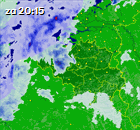ASTROPOLIS demo Perseïden 12 aug 2025
- ASTROLAB Ieper
- BRAMS_Belgian Radio Meteor Stations
- BRAMS Oostende Astropolis viewer
- Meteor Radar Finland
- BIRA_Belgisch Instituut voor Ruimte-Aeronomie
- VHF beacon GRAVES RADAR
- SDR GRAVES meteor beacon 143.050 kHz
- SDR IEPER meteor beacom 49.990 kHz
- Werkgroep Meteoren
- Verkarende woordenlijst
- Chelyabinsk Meteor Hits Russia 2013_Youtube
- Spectrum Lab_Audio Spectrum Analyzer
Ham Radio Propagation
NAVTEX_Live
|
- DX CLUSTER - | |
| DXheat Cluster | DX Summit Cluster |
Metar_EBOS
I S S
Contactformulier
4 jan 2018
WeFAX

A number of stations world-wide transmit weather charts on a regular schedule. During the transmission of an image a characteristic and easily recognizable audio signal is heard. A specific frequency deviation may also be seen on a tuning indicator. Most transmitters work with a wide shift (± 400 Hz) and a few with narrow shift
(± 150 Hz).
In the short-wave band, weather charts are transmitted almost exclusively with speeds of 60, 90 or 120 rpm. In the case of 60 rpm the drum rotates once per second, for 90 rpm at one and a half time and for 120 rpm at a speed of twice a second. The index of co-operation (IOC) is readily recognizable from the screen display when images are spread out too wide. An IOC of 576 is mostly used on short-wave.
Gepost door Luc op 17:24 0 reacties
Labels: Frequenties
















